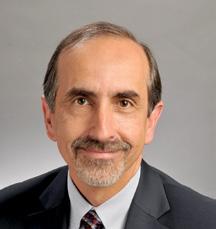
2 minute read
Dean’s Page
John P. Zubialde, MD Executive Dean and Professor, Family and Preventive Medicine University of Oklahoma College of Medicine
As part of an academic healthcare system, the mission of the OU College of Medicine involves taking our work beyond the boundaries of our campus and across Oklahoma, where physicians and patients manage health conditions in their home and community settings. To more fully work toward that mission, I was pleased last month to announce the creation of the Office of Healthcare Innovation and Policy and its director, Dr. Steven Crawford. Many of you know Dr. Crawford as the longtime chair of the Department of Family and Preventive Medicine and for his advocacy with numerous state organizations. We are delighted that he is joining the Executive Dean’s Office, where he will also serve as Senior Associate Dean. The Office of Healthcare Innovation and Policy will serve as an umbrella for resources within the College of Medicine and across the OU Health Sciences Center. Our faculty members are leading many exciting programs across the state, and the role of this office is to coalesce these efforts in a strategically aligned fashion. The medical care we deliver is important, but equally so are the resources for our patients in the communities where they live. Approximately 75% of the care we provide is for people with chronic illness. Once they
leave the doctor’s office or hospital, they must manage their conditions, and we want to work with communities and health systems to find innovative solutions to address the things that most impact their health and wellbeing. For example, in Healthy Hearts for Oklahoma (H2O), our team led a project that assisted approximately 300 primary care clinics across the state in incorporating and standardizing guidelines known to decrease the risk of cardiovascular disease. By embedding a person known as a practice facilitator into each practice, we were able to work in-depth with both clinicians and office staff to leverage their electronic health records for the project. Rural practices are especially strapped for time and resources to conduct quality improvement initiatives, but with assistance in using their EHR to its full potential, they saw several positive outcomes. Overall, practices saw an increase in documentation of aspirin use when appropriate, an improvement of blood pressure control, and more consistent verification of a person’s tobacco use and referral to treatment. The three-year project was funded by the Agency for Healthcare Research and Quality. The success of that program led to a similar program called Do No Harm, a pain and opioid management effort in conjunction with the Oklahoma Department of Mental Health and








